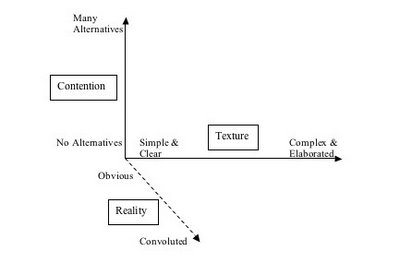Instead, I'm thinking of the implications some draw from her work on caring. From what I understand as a mere historian of education, her work (going back to her 1984 book Caring) argues that a relational ethic of caring is an alternative to the deontological arguments of Kant or the utilitarian ethic of Bentham and that ilk. I'll return in a moment to the contribution she and other feminist philosophers make towards ethics and justice in a minute, but what concerns me is how others misread her. The most studious misreading I know of is by virtue ethicists such as Michael Slote, who argues that one must turn her relational argument into virtue ethics because to do otherwise would be unfair to the person who is caring (since caring may not be worth anything unless received as caring by the other person). (See Nodding's response.) That's an interesting argument (though I think it gives considerable privilege to paternalism), but I will leave the proper categorization of Nodding's caring to the professional philosophers here at The Wall.
What concerns me is the more casual transformation of Nodding's caring notion into a rougher virtue, especially in teacher education programs. Those taking inspiration from Noddings often write about a "caring teacher," including the characteristics a caring teacher might have (e.g., Concordia College, 2003; Lewis-Clark State College, n.d.; Nowak-Fabrykowski & Caldwell, 2002). Mentioning the characteristics of a "caring teacher" (or dispositions, in NCATE lingo) instantly turns caring into a virtue.
But virtue ethics have no place in professional education, especially in teacher education. I say this from an historian's perspective, not a philosopher's. There are a number of reasons why virtue ethics are inappropriate in professional education—the way that it can lead to litmus testing (as in LeMoyne College), or the psychologization of evaluation and the presumption that faculty in a professional school can somehow evaluate (or worse, intuit) what's inside someone's head. This search for some sort of a professional soul tempts faculty to think of professional education as a process reconstructing the self, something with which I am highly uncomfortable.
More insidious is the way that this transformation of caring into a virtue feeds into the historical rhetoric denigrating teaching as an intellectual occupation. Two hundred years ago, the primary qualification for teaching was virtue, not academics. When Mann and others encouraged the hiring of women as teachers, it was from the essentialist argument that women are more nurturing. While that was a shift from the predominance of men in teaching, it dovetailed with changing sex roles (Strober & Tyack, 1980).
We retain this legacy of seeing teachers as role models, with virtue and morals more important than skill. People assume my wife must be patient because she teaches special education, but whether she can think about her students is ignored. And then there are the old chestnuts: Women who care and teach don't need to be paid decently, because that's just what women (and teachers) do. It's a service profession, after all, like nursing and social work. Who goes into teaching to make money? So pardon the sound of my teeth grinding when I hear about "caring teachers." Regardless of the philosophical arguments, writing and talking about teacher virtues feeds into some of the worst historical legacies for teachers.
That conclusion doesn't mean that Noddings isn't important. She is, but in a different way. In my mind, her work falls within a literature on reconstructing (liberal) philosophical arguments from relational assumptions. Rawls' (1971) original position was the ultimate end-point of liberal philosophy, focusing on the logical consequences of assuming that people are isolatable individuals: take that individual outside of reality, behind the veil of ignorance, and see what the logical person-in-a-vacuum would conclude is just. As many others have noted, that assumes the existence of the person-in-a-vacuum. Communitarians have taken one counterposition to liberalism, arguing that we must see the community in itself as an important unit of society.
Others have taken a different approach, seeing relationships as the source of self (Guignon, 2003) and of a network of obligations that have ethical consequences, including public policy (Kittay, 2001). In this regard, I find Kittay's work more satisfying than the others, because she recognizes the way that there are multi-level dependencies, where those who care for a dependent are themselves weaker and dependent. Kittay argues that welfare reform of the 1990s privatized the act of caring, placing it in the bounds of family, outside public policy. Leo Casey's argument against the "caring teacher" language echoes Kittay's criticism of the privatization of dependency: when teachers are assumed to be the sole ones who care for kids' minds, then the network of support that teachers themselves need is neatly placed on the shelf.
Thus, Noddings' work is better seen as tentative, raising interesting questions about the extent to which we can (re)construct notions of ethics and justice from a relational starting point. Those in education have much to offer in this regard, from the relational nature of teaching to the implications of disability for our notion of the self. Instead, too many of our colleagues see her work as the caring gospel, a reification that does far more harm than good. Do I care for my students? I try. But don't call me a caring teacher, ever.
References
Concordia College. (2003). Conceptual framework. New York: Author.
Guignon, C. (2004). On being authentic. New York: Routledge.
Kittay, E. F. (2001). A feminist public ethic of care meets the new communitarian family policy. Ethics, 111, 523-547.
Lewis-Clarke State College. (n.d.). Conceptual framework. Lewiston, ID: Author.
Noddings, N. (1984). Caring: A feminist approach to ethics and moral education. Berkeley: University of California Press.
Nowak-Fabrykowski, K., & Caldwell, P. (2002). Developing a caring attitude in the early childhood pre-service teachers. Education, 123(2), 358-364.
Rawls, J. (1971). A theory of justice. Cambridge, MA: Belknap Press.
Strober, M., & Tyack, D. (1980). Why women teach while men manage. Signs, 5, 494-503.




